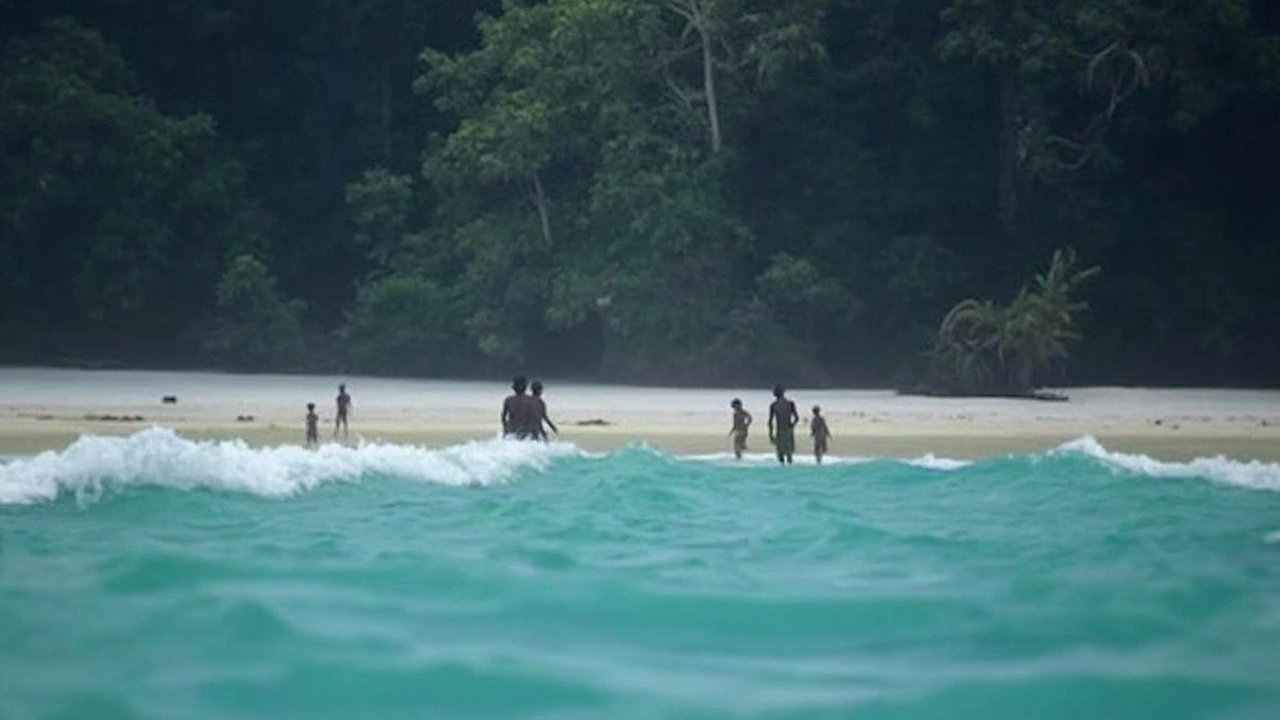Imagine an island where time seems to have stood still, where the ancient traditions of its inhabitants remain untouched by the modern world. This is North Sentinel Island, nestled in the Bay of Bengal, home to the elusive and fiercely independent Sentinelese tribe. This small island, part of India’s Andaman and Nicobar archipelago, is known as one of the planet's most protected and isolated places.
The Mystery of the Sentinelese
The Sentinelese people have lived in near-perfect isolation for tens of thousands of years, preserving a way of life that hearkens back to the Stone Age. Estimated to number between 35 and 500 individuals, these hunter-gatherers are known for their intense dislike of outsiders and have been known to defend their island with deadly force.
Their language and customs remain a mystery, largely due to their open hostility towards outsiders. Historical encounters have not been smooth, with early interactions marred by violence. One notably tragic incident in 1880 involved British colonial officer Maurice Vidal Portman, whose abduction of six islanders tragically resulted in deaths due to disease exposure—a scenario underscoring the grave risks of bringing new pathogens to this isolated community.
Encounters and Ongoing Protections
Efforts to contact the Sentinelese have seen mixed results. While peaceful engagement attempts in 1991 by anthropologist Triloknath Pandit provided brief moments of interaction, there has been little progress in fostering long-term communication. Tragedy struck again in 2018 when American missionary John Allen Chau attempted to make contact, only to be killed by the tribe, drawing international attention and emphasizing the dangers of such endeavors.
The Indian government, acutely aware of the peril both to and from outside contact, declared the island a tribal reserve in 1956. Strict laws keep a 3-nautical-mile buffer zone around the island, monitored by armed patrols, and photography is strictly forbidden.
However, in March 2025, another breach occurred when Mykhailo Viktorovych Polyakov, a U.S. national, was arrested for trying to step onto the island with a can of cola and coconut, presumably as peace offerings. Surviving such incidents without harm doesn't negate the severe implications these acts pose on the Sentinelese health and autonomy.
Survival International and other groups emphasize that even seemingly harmless interactions could decimate the tribe through disease exposure—highlighting the fragility of their isolation.
Maintaining the Sentinelese way of life requires a delicate balance between their human rights and protecting their isolation. Indian authorities face a challenging task: safeguarding the tribe from outside influence while confronting illegal poaching and fishing—problems that loom as potential threats to this ancient culture. The Sentinelese people's story is a powerful reminder of how modernization’s advances can often endanger the very cultures that connect us to our past.
